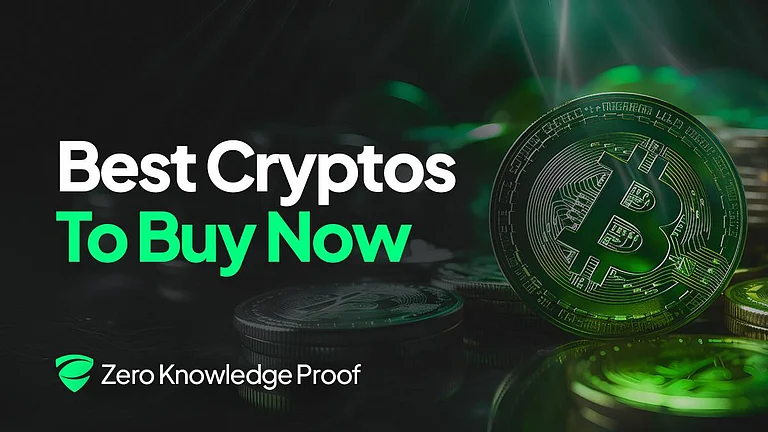Ethereum, since its release in 2015, has been a cryptocurrency plus; it has served as the foundation for dApps, DeFi, and smart contracts. Ethereum enabled protocols to be developed that can execute without intermediaries, opening a new model of finance, technology, and governance.
The original Ethereum network (Ethereum 1.0), however, had abominable issues:
Scalability: When it became popular, the network could not handle transactions properly. Gas fees were reaching heights during peak times, and it was difficult to use.
Energy Consumption: The initial Proof of Work (PoW) protocol on Ethereum was using enormous processing power, which was ecologically harmful on a grand scale.
Security: Although decentralized, Ethereum 1.0 was susceptible to network congestion and certain types of attacks.
To aid in countering these issues, Ethereum launched Ethereum 2.0 (Eth2) that created the historic moment referred to as The Merge. It was a roll-out that transitioned Ethereum from PoW to Proof of Stake (PoS) based, making it many times more energy efficient, scalable, and secure.
Learning about Ethereum 2.0
What is Ethereum 2.0?
Ethereum 2.0 is not a token but a development of the entire network to mature based on the limitations of Ethereum 1.0. It will create a green, fast, and secure blockchain.
The main goals are:
Scalability and Transaction Throughput: Ethereum 2.0 features sharding, where the network is segmented into sub-parallel chains. This enables more parallel transactions to be handled in quantity, hence eliminating bottlenecks and allowing smoother performance for dApps, DeFi protocols, and NFT marketplaces.
Lower Energy Consumption Through PoS: Ethereum's transition from Proof of Work to Proof of Stake halts energy-guzzling mining. Verifiers no longer check the network with power. They check the network with ETH, which is a huge drop in electricity consumption and makes the network environmentally friendly.
Uphold Decentralization and Strengthen Security: PoS rewards goodness and penalizes evil in terms of money. Validators are randomly selected to make and vote for blocks, which makes it secure without entrusting power to some miners.
Prepare Ethereum for Mass Adoption: Ethereum 2.0 will be better prepared for mass adoption with greater scalability, lower fees, and greater finality of transactions. This makes it possible for people, developers, and organizations across the globe to use the network effectively.
In brief, Ethereum 2.0 employs Proof of Stake, sharding, the Beacon Chain, and eWASM. All these make Ethereum fast, secure, and eco-friendly, and also makes possible a new era of blockchain applications.
Ethereum 2.0 Key Features
1. Proof of Stake (PoS)
PoS eliminates energy-guzzling mining with the use of validators who stake ETH, where specialized mining rigs are eliminated.
Random Selectors are elected to make new block proposals and validate transactions to ensure equality and prevent centralization risks.
Misbehavior like bad block proposals or temporary disappearance is rewarded or "slashed" to prevent malicious behavior and ensure network integrity.
Small participants can also validate the network in PoS, hence more inclusivity than in PoW mining.
2. Sharding
Sharding splits Ethereum into shards or into several smaller chains known as shards, and their transactions can be processed independently on each shard.
Code means that nodes do not have to process all of the transactions, which has an enormously huge impact on throughput and decreases network congestion.
Sharding also enhances data availability, and more complex apps can be developed by developers without clogging up the network.
Sharding in the future would enable Ethereum to support thousands of transactions per second and hence adoption on a global scale.
3. Beacon Chain
The Beacon Chain, which is the underpinning of Ethereum 2.0's proof-of-stake consensus, went live in December 2020.
It coordinates validators, penalty and reward staking, and consensus on all shards.
It was already running in parallel with Ethereum 1.0 prior to The Merge, and thus the process of PoS had already been thoroughly tested.
Since The Merge, the Beacon Chain has taken over the core Ethereum chain and provided security and consensus for the network.
4. Ethereum WebAssembly (eWASM)
eWASM is a future-proofed virtual machine that replaces the Ethereum Virtual Machine (EVM) deployed for contract execution.
Support for multiple languages of programming simplifies creating and makes it more adaptable to develop.
eWASM improves time and cost of execution but provides improved performance for complex dApps.
With this upgrade, Ethereum is able to support more advanced programs, ranging from DeFi protocols to NFT marketplaces and gaming sites.
The Merge: Raising to Proof of Stake
What Was The Merge?
The Merge, finalized on 15 September 2022 was Ethereum's move from Proof of Work (PoW) to Proof of Stake (PoS). The accomplishment merged the Ethereum mainnet with the Beacon Chain that was running on PoS. The significant implications include:
Energy Savings: The energy use by Ethereum decreased by around 99.95%, removing the need for energy-intensive mining and making the network considerably greener. The transition leaves Ethereum one of the greenest major blockchains.
Security Enhancement: Validators take over from miners in verifying transactions. Since validators have to stake ETH in order to participate, it is now extremely costly to try to launch an attack on the network, and network security and resilience are even improved overall.
Decentralization Guarantees: PoS enables more users to help secure the network without needing to buy costly mining equipment. This fosters more participation and maintains the network open, which maintains Ethereum's decentralization.
Technical The Merge Details
Merging Chains:
History of Ethereum mainnet's PoW were merged with the PoS Beacon Chain to preserve all past transactions and enable PoS validation. With careful merging, there was a seamless merge without network interruption.
Validator Activation: 32 ETH staked to become validators after the Merge, making new block proposals and approvals with validator software. Bad income investors can collective stake, opening doors for contribution with little ETH amounts.
Network Consensus: PoS employs a random sample of validators, making proposals for blocks equal and eliminating the chance for centralized attacks. This maintains consensus running at optimal speed without sacrificing scalability.
Advantages of Ethereum 2.0 and The Merge
1. Scalability
Parallels transactions through sharding.
Transaction rate from ~15 TPS (Ethereum 1.0) to potentially thousands of TPS in the future.
Allows mass adoption of dApps, NFTs, and DeFi without congesting the network.
2. Increased Security
Economically penalizes attacks, so people become less evil.
Validator slashing protects the network.
Sharding shreds data between nodes, minimizing central points of failure.
3. Energy Efficiency
Mining is eliminated, with huge amounts of electricity saved.
Ethereum is among the most eco-friendly major blockchains.
4. Reduced Transaction Costs
Increased efficiency and throughput lower gas prices over time.
Low-cost and quick transactions make users money, leading to greater adoption.
Challenges and Considerations
1. Validator Participation
Network Dependence Security: Ethereum 2.0 is dependent on having enough validators staking ETH to secure and validate the integrity of the blockchain. Without enough users, the network is more susceptible to being attacked or slowed block verification.
Increased Incentive to Participate: Incentives to stake increase the participation incentive, but others won't engage due to lockup period or slashing risk, reducing the overall network efficiency.
2. Centralization Risks
Large Holder Effect: PoS naturally vests more power in larger ETH holders, with inclination to centralize power on block validation and decision-making.
Mitigation Measures: Ethereum rewards decentralization with staking pools and systems that divide rewards equally so smaller holders can take part without needing to hold 32 ETH each.
3. Transition Period
Technical Sophistication of The Merge: Transitioning from PoW to PoS was technologically advanced and had the process of synchronizing various parts of the network involved. Anything wrong might have caused downtime or forks.
Testnet Functionality: Testnets such as Goerli and Ropsten played a critical role in simulating real-world scenarios, validator action, and seamless integration before mainnet Merge.
4. Layer 2 Dependence
Scalability Still Pending Implementation: How great Ethereum 2.0 is at increasing throughput, Layer 2 protocols such as Optimism, Arbitrum, and zkSync have to actually execute high-demand periods.
Layer 2 network adoption is what's holding gas affordable, lowering payments, and improving the overall user experience, especially for DeFi and NFT use cases.
Ethereum 2.0 Roadmap and Future Upgrades
Ethereum will keep evolving after The Merge, with some of its next upgrades intended to further enhance scalability, efficiency, and usability:
Shanghai Upgrade:
Seeks to enhance transaction throughput and ease network congestion so decentralized apps and additional users can act in a timely manner.
Introduces ETH withdrawals from staking, which will enable validators to withdraw their staked capital safely, giving them more flexibility and confidence among network actors.
Eliminates transaction processing latency, opening up efficient interaction with DeFi platforms, dApps, and NFT marketplaces.
Cancun-Deneb Upgrade
Deploys Proto-Danksharding, a new way of processing vast amounts of blockchain data more efficiently on Ethereum.
Decreases the data-intensive use case cost of applications like NFTs, decentralized games, and analytics platforms, making them more consumable by developers and users.
Enhances overall scalability, allowing Ethereum to process more transactions per second without compromising the security and stability of the network.
Fusaka Upgrade:
Seeks to lower gas fees even further, with end-users, small investors, and developers spending less on Ethereum transactions.
Enhances transaction rate, block finality, and throughput even in the case of extremely congested networks.
Makes Ethereum an even more viable and high-performance decentralized application platform in the international market and enterprise blockchain solution.
These enhancements in aggregate make Ethereum competitive, scalable, and sustainable, allowing a robust DeFi, NFT, DAO, and enterprise blockchain applications ecosystem worldwide and setting Ethereum up for long-term adoption.
Applications of Ethereum 2.0 in Real Life
1. Decentralized Finance (DeFi)
Lending platforms, stablecoins, and decentralized exchanges are more efficient and cheaper.
2. Non-Fungible Tokens (NFTs)
With reduced energy consumption and fees, NFT minting and trading become eco-friendly.
3. Decentralized Autonomous Organizations (DAOs)
PoS enables faster governance transactions and higher participation.
4. Enterprise Blockchain Applications
Ethereum 2.0 offers a secure platform for enterprise blockchain adoption in supply chain, payment, and identity authentication.
Comparison: Ethereum 1.0 and Ethereum 2.0
Feature | Ethereum 1.0 (PoW) | Ethereum 2.0 (PoS) |
Consensus Mechanism | Proof of Work | Proof of Stake |
Energy Consumption | High | Low |
Transaction Speed | 15 TPS | 1000+ TPS potential |
Security | Moderate | High |
Validator Requirement | Mining Hardware | 32 ETH Stake |
Future Outlook
Ethereum 2.0 establishes a benchmark for blockchain scalability and sustainability. Its disruption echoes across sectors:
World Adoption of DeFi: Affordable and faster payments make decentralized finance platforms more appealing to customers worldwide. Barely scaled investors can utilize them without an immense initial investment, and gigantic trading volumes are optimally better managed, resulting in increased usage of borrowing, lending, and trading protocol.
NFT Market Growth: Reduced environmental cost removes the specter of energy-guzzling blockchain activity. Creators and artists can now produce, purchase, and exchange NFTs with reduced anxieties regarding carbon footprint, promoting more equality and sustainability for the digital art market.
Corporate Adoption of Blockchain: Green PoS networks are attracting corporates seeking green solutions in the management of assets, payment, and supply chain. Security, transparency, and scalability of Ethereum 2.0 make it the most popular solution among corporates adopting blockchain technology at the business level.
Conclusion
Ethereum 2.0 and The Merge are revolutionary for blockchain technology. Ethereum is green and cost-effective as a platform by solving energy, scalability, and security issues. Any additional Layer 2 solutions and upgrades, which solve issues such as validator centralization and gas prices, have bright prospects. Ethereum 2.0 is revolutionary in blockchain technology because of its ability to support the increasing digital economy and emphasis on sustainability and accessibility.
FAQs
Q1: How do I become an Ethereum 2.0 validator?
Stake 32 ETH and run validator software, or use staking services through exchanges or pools.
Q2: Will Ethereum 2.0 eliminate high gas fees?
Not immediately. Layer 2 solutions and future upgrades like sharding are required to significantly reduce fees.
Q3: Is Ethereum 2.0 eco-friendly?
Yes, PoS drastically reduces energy consumption, making it one of the most sustainable blockchains.
Q4: Can I still mine ETH after The Merge?
No. Mining is obsolete; validators now secure the network.
Q5: What is the future of Ethereum beyond 2.0?
Continuous upgrades focus on scalability, lower fees, cross-chain interoperability, and adoption of enterprise solutions.

























